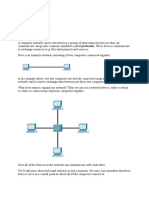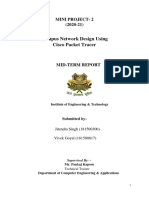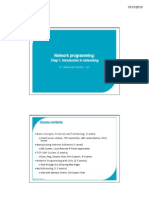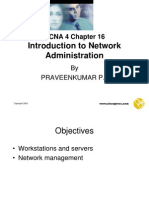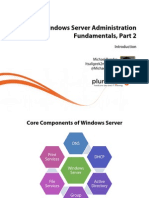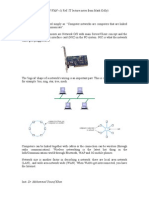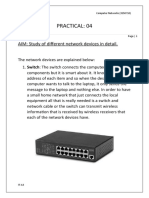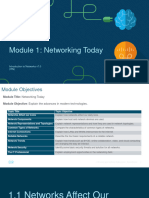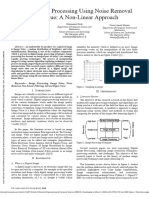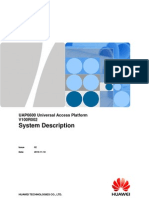0% found this document useful (0 votes)
338 views5 pagesNetworking Basics for IT Students
The document provides an introduction to networking topics including how networks affect daily life, common network components, different network topologies, types of networks, internet connections, requirements for reliable networks, current networking trends, basic network security, and career opportunities in networking.
Uploaded by
iswan.10819001Copyright
© © All Rights Reserved
We take content rights seriously. If you suspect this is your content, claim it here.
Available Formats
Download as PDF, TXT or read online on Scribd
0% found this document useful (0 votes)
338 views5 pagesNetworking Basics for IT Students
The document provides an introduction to networking topics including how networks affect daily life, common network components, different network topologies, types of networks, internet connections, requirements for reliable networks, current networking trends, basic network security, and career opportunities in networking.
Uploaded by
iswan.10819001Copyright
© © All Rights Reserved
We take content rights seriously. If you suspect this is your content, claim it here.
Available Formats
Download as PDF, TXT or read online on Scribd
/ 5















